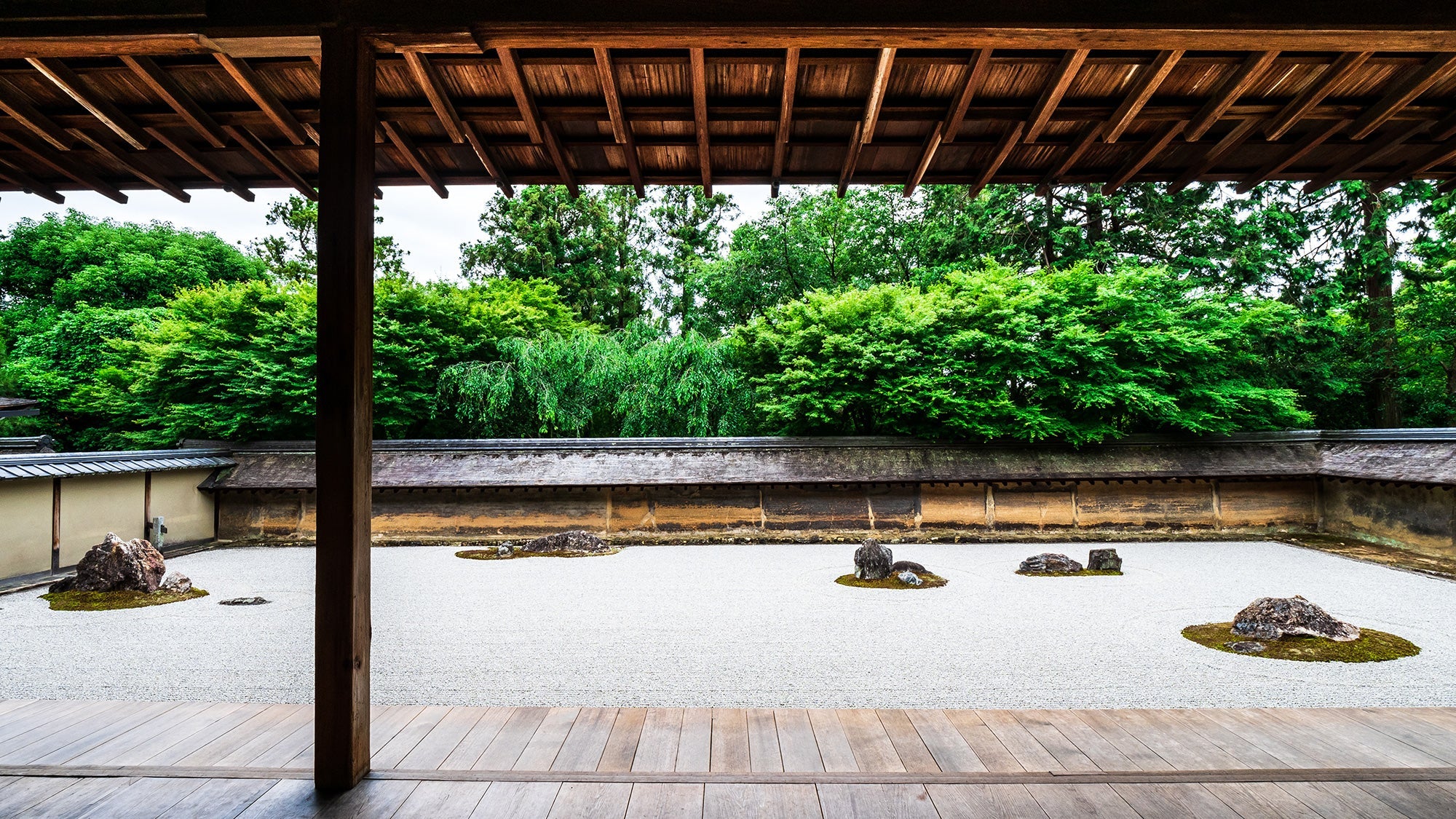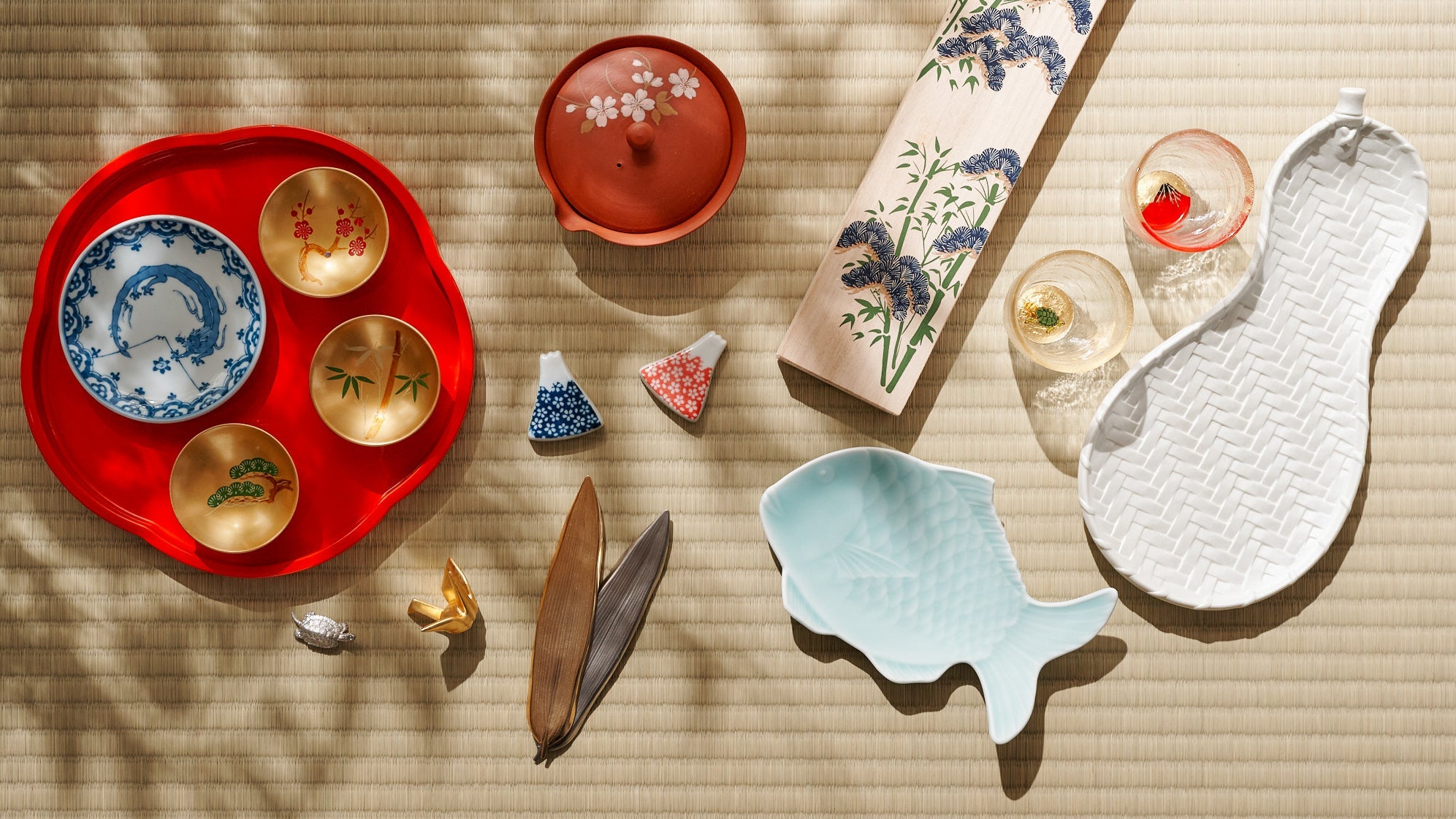
A Puzzling Beauty: Japanese Rock Gardens
Written by Michael Pronko
Few cultural expressions are so completely Japanese as to have no counterpart in other cultures. But one of the most Japanese expressions—or perhaps it should be called a Japanese experience— is rock gardens. Even as an American living in Japan for nearly thirty years, rock gardens continue to puzzle and delight me. Their mystery remains pleasingly hard to decipher.

Whenever I go to a new part of Japan, or return to old favorites like Kyoto and Kamakura, I always check my reference books and search online to find out if there is a garden. Almost always, there is. I add it to my itinerary as an essential part of any trip inside Japan.
When heading to a rock garden, I always prepare myself to be a little confused. The term “inscrutable” is almost a cliché when applied to Asian culture, but for rock gardens, that word seems to be the right one. How can a jumble of rocks, gravel, bushes, maybe some moss, and a thin tree or two hold profound meaning?

There’s a wall around. There’s a temple behind. And there are often smaller gardens. But how does it go together and what does it mean? I love the questions that crop up and though all cultures pose their own unique questions, rock gardens pose their questions in beautiful ways.
In one sense, the gardens seem straightforward. Called sekitei, which means literally “rock garden,” they are basically that—rocks. They are also called karesansui, combining the characters for “dry,” “mountain,” and “water.” But translating all that to “garden” makes it confusing. In the western conception, gardens should be lushly green, colorfully blooming, neatly aligned spaces. You grow vegetables and flowers there.

Not so in Japan. Of course, Japan also has gardens like those in the west, but Japanese rock gardens are more like a skeleton of a garden. The colors range from grey to green to faded brown, a very limited palette. But they impress with that simplicity. All the excesses of large, ornate, western gardens are pared down to the basics. Just like ink and brush painting, they use a lot of empty space and very simple shapes.
I like that the garden is highly subtractive. Most western gardens contain rows of flowers, carefully trimmed hedges, elaborate statues, complex mazes, tiered fountains—all of it shaped, transformed, or built with intentional flourish. Japanese rock gardens also involve time and effort, theory and execution, but at a different scale, and in a different direction, as if removing is as beautiful as adding.

The gravel that covers the ground is carefully raked each morning and the leaves are pruned with care, but the upkeep work is tucked away, not set out front. Because of that, rock gardens keep the mystery hidden, and hand it to the viewer without overdoing it. They feel natural, not human-made, even though the rocks could not have possibly tumbled into that position on their own. They shape nature without leaving nature behind.
Rock gardens are often called Zen gardens. They developed out of the same way of thinking: no elaborate teaching or expression; no distraction; intense focus on essentials; and counterintuitive understanding. The garden often serves, like the confusing koans of Zen (e.g., what is the sound of one hand clapping?), as an aid to meditation. At many temples, the gardens are still used as one path to meditative insight.

But you don’t need to carry a history book or meditation guide to enjoy Japan’s rock gardens. You can just sit down and look. That’s what I do when I travel inside Japan. I race around trying to see as much as I can, then head to a rock garden before closing time when tourists are gone, and the day is quieting. I can sit for however long is left and look at the garden as time slows down.
It’s not just about calming jangled nerves. I like to sit and look at a garden instead of scrambling for souvenirs or flipping through the day’s photos. Stopping by a rock garden hits the pause button. I drop onto the old floorboards, shoes left at the entryway, and just let my mind go. It’s a brain break, a massage for the mind. Rock gardens help recreate an internal order of the mind, body, and spirit.

Quietude is essential. At a temple with a magnificent rock garden in Kyoto one time, I was besieged by three Japanese women, old friends it seemed, who sat down and chatted—loudly—about nothing important. They didn’t even look at the garden. It felt like a violation. The rock garden obliges respectful, silent appreciation.
That doesn’t mean you can’t talk about it or take photos. I do. I use some photos as a computer desktop image. It seems to calm me in the middle of busy workdays. There at the garden or even on my computer, the calming power of the rocks and gravel comes from viewing the subtleties of patterns, shapes, forms, and colors.

Rock gardens encompass a vast array of metaphoric meanings, and like the best art anywhere, the meanings are indeterminate. At some temples, you can get a key to the configurations and an explanation of sorts. Always, the design revolves around concepts from Zen, a form of Buddhism that avoids overdetermined explanations, and puts the burden of understanding on the individual.
I like that openness of meaning. It’s not a puzzle to figure out. It’s more like an unfinished canvas that you complete in your own mind. Or leave open in your mind. It isn’t that the rocks are an abstract guide to achieving enlightenment, though for most Buddhists, or the Buddhist-inclined, they would be. It’s more that they invite you to wonder.

I think of the rocks and plants like words in a long sentence that ends with a question mark. The gravel raked into waves provides energy and a sense of motion. The rocks stand solid and unmoving. The trees and bushes bend with supple restraint. The outer wall contains the space, but gently. There is always sky above.
Religious metaphors aside, I am always amazed at how they could transport the huge rocks there and maneuver them into position. Where did the rocks come from and how were they moved? How were they tied and carried and jostled back and forth until the exact right spot was found? Why weren’t they set a little to the right? Or to the left? Or forward or backward or…it can be dizzying to contemplate.

Of course, all of that is known and recorded carefully in historical records. The garden designers are masters of their art. There are many books about garden construction, ancient manuals with theories and techniques. I have several contemporary books on the subject and enjoy browsing them. But the explanations, diagrams, and techniques don’t begin to explain the mystery of how the final form works.
When I read about the deeper meanings from time to time, discovering what others have found in the configurations is interesting, but it’s the immediacy of the in-the-moment experience that I treasure the most. No understanding of rock garden construction or explication of traditional Buddhist thought can be as good as just sitting and looking. I like the uncertainty and intensity of the aesthetic experience they provide, and how it deepens my thoughts and transforms me each time.

To sit on the worn wood of an old temple and contemplate the design of a rock garden can be powerful and moving. To me, rock gardens are not just creative designs, religious places, or meditation aids. They are timeless experiences that amaze me, amuse me, and leave me feeling I will never completely understand Japanese culture. But as long as I keep going to Japanese rock gardens, that ongoing struggle to understand is just fine.
The images in this article are for illustrative purposes only.








4 comments
@O. Gahagan – Such a simple yet profound reflection. Sometimes, just sitting and observing is enough to appreciate the quiet beauty around us. Thank you for sharing this lovely thought.
Team Musubi
@Allan Scaccia – What a beautiful connection you have with gardens! Balboa Park’s garden sounds like a place filled with discovery and inspiration. We truly hope you get to visit Japan and immerse yourself in the Zen gardens. And how special it would be to share that journey with your family! Thank you for your heartfelt comment.
Team Musubi
Just sit.
Just look.
Sky above, bushes, a few trees, wall.
Tourists come and go.
O. Gahagan
Thank you so much for putting into such beautiful and instructive narrative the private enjoyment that a Zen garden inspires. We have a rather beautiful garden here in San Diego’s Balboa Park that keeps me coming back to find that one secret treasure that I missed before. I hope someday to travel to Japan and do a tour of the gardens that I have only explored in books. Maybe I can talk my son and grandson into joining me.
Allan Scaccia
Leave a comment
This site is protected by hCaptcha and the hCaptcha Privacy Policy and Terms of Service apply.